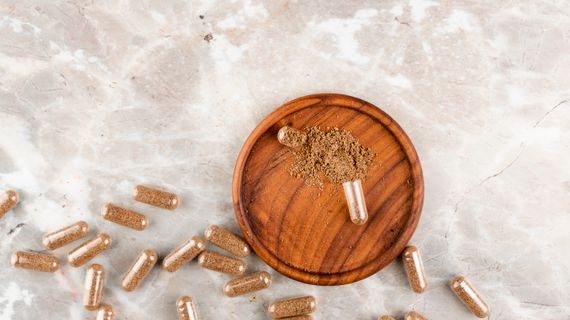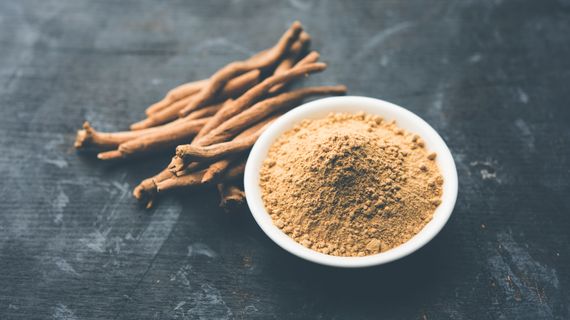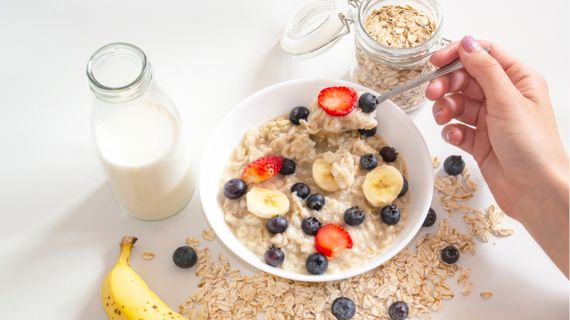- Casein in its natural micelle form, is the most abundant protein in cow's milk.
- Digestion of casein is slow and can take more than four hours.
- One dose of casein provides approximately 75% of the daily calcium intake.
Casein accounts for 80% of the protein in mammalian milk and is used to make cheese and yoghurt. It is also well‑known among athletes for its use in sports supplementation. Casein contains proteins of superior nutritional quality and, in the form of micellar casein, is also a rich source of certain minerals.
Why should casein deserve a little more attention, and what are the benefits of the native form of micellar casein?
Casein vs. whey: What role does absorption rate play?
Casein and whey are the two basic types of protein found in milk. Whole milk contains about 80% casein, whey accounts for the remaining 20%. From a nutritional standpoint, they mainly differ in their absorption rate:
- Casein is a slowly absorbed protein. It takes a relatively long time to digest, requiring approximately four hours to digest for a dose of 30g. At higher doses, the digestion time is likely even longer.
- Whey protein, on the other hand, is one of the fastest absorbing proteins. It is estimated to be completely absorbed in about 2.5 hours after a 30g administration.
In terms of amino acid content, however, the two proteins are actually quite similar. Both are considered complete proteins; their PDCAAS score is equal to 1.0 (maximum value) and it must be said that in both cases by a considerable margin. Interestingly, according to the DIAAS index (the most up‑to‑date method for determining protein quality), casein has an even higher score compared to whey protein.
Whey has a slightly a slightly higher proportion of L‑leucine and is, therefore, sometimes considered more effective in promoting anabolic processes. Here, however, casein should be defended, as it also contains more than 10% L‑leucine, exceeding most common protein sources (including "quality" ones like eggs, meat or soy).
In practice, it is beneficial to take the differences in absorption speeds into account. Just after a strength workout, whey is probably a better choice than casein, especially if you have another meal coming up soon (within 2 hours). In other cases, this is not necessarily the case.
Casein micelles: the natural shape present in milk
Casein is found in milk in the form of micelles. Unlike whey proteins, which are dissolved in milk, casein forms colloidal particles within an emulsion. A casein micelle can be thought of as a cluster of approximately spherical molecules that have a fixed structure.
On the outside of the casein micelle is the so‑called ϰ-casein (one of the 4 protein fractions that make up casein), which is bound to a glycomacropeptide. Calcium and phosphorus are concealed inside the micelle. Approximately two‑thirds of the calcium in milk is hidden within casein micelles in this manner.
Micellar casein or alkaline caseinates? The differences can be significant
Although casein makes up 80% of the protein in milk, its actual proportion in milk is relatively small, comprising only about 2.5% of milk. To obtain casein in a concentrated form, milk must be processed. The casein micelles are large, so multiple microfiltration through pores of over 100nm is sufficient to isolate them. In this way, we can obtain micellar casein with a protein content of more than 80% and, as a rule, more than 90% is made up of micelles. Due to the preservation of the micelle structure, it excels in calcium content, with 100g of the product often containing more than 2000mg of calcium, which is 250% of the reference intake value.
Several processes are added in the production of caseinates. Firstly, acid curdling breaks down the structure of the micelles, simultaneously depleting surface glycomacropeptides and calcium. Subsequently, a strong base (sodium hydroxide, calcium hydroxide) is added to form the corresponding caseinates (sodium caseinate, calcium caseinate). The caseinates no longer retain a native micelle structure and are denatured. They contain a lower proportion of certain protein fractions and calcium, a result of the disruption of casein’s natural structure. However, compared to micellar casein, they are more soluble and likely more rapidly absorbed.
Micellar Casein Protein Powder

In which cases should I use micellar casein?
Despite its many benefits, micellar protein is not an ideal choice for immediate post‑workout use. That honour still belongs to whey protein, which, thanks to its fast digestibility (and potentially higher l‑leucine content), is better suited for rapid recovery and supporting muscle‑building processes. Micellar casein, on the other hand, is an excellent protein to consume during the day as a source of high‑quality protein. Due to the longer‑term amino acid replenishment in the body, it is often considered "anti‑catabolic".
For example, if we were to compare the rate of muscle‑building processes after taking whey or casein over a longer period of time, we would find that casein leads to significantly better results. Of course, such a situation is unlikely to occur during the day, as you'll probably have a meal soon after drinking a protein shake.
During the night, however, this situation does occur, making micellar casein a hot candidate for the ideal protein source in the last meal of the day. It's no coincidence that micellar casein is often included in nighttime or multi‑ingredient protein formulas that are suitable for consumption during the day or before bed.
Bottom line
Casein in micelle form is naturally the most abundant protein in milk. Compared to whey, it digests slowly, with total digestion time reaching up to 6‑8 hours. In terms of protein quality, casein ranks among the highest. It has a high proportion of essential amino acids, including the branched chain amino acids (BCAAs). It is also naturally high in calcium, as two‑thirds of the calcium in milk is bound in the form of casein micelles.
Micellar casein is suitable as a high‑quality source of protein during the day. It is particularly popular as the last meal of the day, where its slow absorption allows for prolonged nutrient replenishment to the body.


















